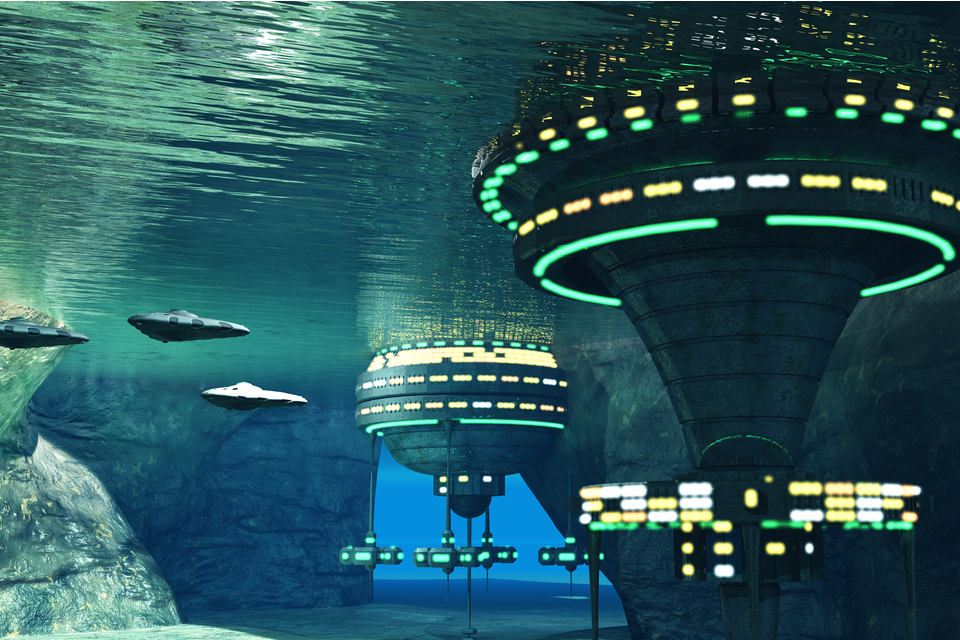With the current advancements in technology, living in an Atlantis-styled underwater city is not as far-fetched as it once was. But why would anyone even consider living deep underwater?
Sebastian, the red crab from Disney’s Little Mermaid, has preached the many virtues of living “Under the Sea”. But aside from the crustacean’s points, there’s also the rising sea levels and ever-increasing global population to consider.
For this reason, various experts and pioneers have theorized that we would eventually run out of space on land. Luckily for us, there are options.
Current researches and technological advancements have raised the possibility of creating a moon colony in the future. Of course, we could also pack our bags and move to the red planet.
However, rather than look to the skies alone for refuge, the ocean offers a more viable option. The Earth is 71 percent water, and this could become prime real estate for future generations.
Canadian inventor Phil Nuytten, who has his sights set on building the world’s first underwater city in the Pacific, said:
Sometime, when I haven’t existed for a long time, a child will sit on his father’s lap, pointing to heaven and saying, ‘Dad, is it really true that people once lived up there on earth?
Now, you’re wondering; how is this even possible?
A Man Who Lived Under the Sea
Jacques Yves Cousteau was a French Naval officer, researcher, oceanographer, and filmmaker.
Aside from sparking scientists’ interest in the ocean, this undersea explorer was also the first to raise the possibility of building an underwater city.
Cousteau was so passionate about understanding the ocean that he created the famous Conshelf – a series of underwater habitats in the 1960s. With this, other researchers were able to live underwater for days, and sometimes, weeks at a time.
It got even better.
The shelters – Conshelf I, II, III – improved with advancements in technology. Eventually, as much as six ocean explorers could live underwater at about 100 meters below the surface.
Cousteau’s effort to colonize the ocean inspired others.
In 1970, an all-female team of ocean explorers in the United States spent more than ten days under the Caribbean sea. And today, you’ll find a handful of underwater research labs around the world.
But, living in an underwater research laboratory is austere compared with an underwater city. Now that’s a different ball game
Building An Underwater City: The Concepts
We’ve seen several marine city concepts within the last decade. From the ocean spiral design to the floating underwater skyscraper, here are some of the top underwater city design concepts.
1. Lady Landfill.
In 2011, three Serbia architects – Milorad Vidojevic, Milica Pihler, and Jelena Pucarevic – designed an impressive underwater habitat concept.
Known as Lady Landfill, the design was an entry for the eVolo 2011 Skyscraper Competition. However, the concept was impressive enough to spark online interests.
According to the designers, the giant skyscraper could one day recycle the wastes of the Great Pacific to generate energy.
2. The Gyre: A Floating Underwater Skyscraper.
In 2010, British Columbia-based Zigloo designed a floating underwater skyscraper called the Gyre.
At a glance, the design looks like an inverted skyscraper diving down. However, it’s much more than that.
The underwater city is supposed to reach the 400 meters depth and cover as much as 212,000 square meters. It also has four wings that are large enough to hold the largest ships in the world.
3. The Ocean Spiral City.
Of all the underwater city concepts outlined above, this may be the most viable. Proposed in September 2018 by the Japanese Shimizu Corporation, the ocean spiral design would be not only sustainable, but it’s also entirely self-sufficient.
The submerged 500-meter sphere would support a tower filled with homes, offices, hotels, stores, and research facilities.
The entrance to the Ocean Spiral city would be 200 meters below the sea level, still within reach of sunlight. However, citizens can travel deeper into the ocean – and the city – through an infra spiral.
For energy, the 5,000 undersea dwellers could generate thermal power using the difference between surface water and deep-sea temperature. According to Shimizu Corporation, building the Ocean Spiral City could cost up to $26 Billion.
This raises the most important question;
Can A City Be Built Underwater?
With the current technology, engineers can quickly build an underwater colony that could support up to 100 people. However, technological advances in certain areas are necessary to handle a higher population.
More research and development is necessary to establish effective emergency evacuation systems as well as environmental control of air supply and humidity.
Current underwater habitats pump air from the surface down a tube using compressors. And to remove carbon dioxide, they have to add a chemical product called Sodasorb.
This method is not self-sustaining for an underwater city. As such, researchers have to figure out how to generate a fresh supply of oxygen – whether it involves growing plants or developing other methods.
Then there’s the issue of generating sustainable energy for an undersea dwelling.
Pioneers have suggested options which vary from harnessing ocean waste to using thermal power from the temperature differences. However, other possible solutions include placing solar panels on the surface or using wave action in the ocean.
For the underwater city itself, it would be easier to create multiple modules rather than one giant bubble. The modules could be made of steel, glass, or in the case of Ocean Spiral City, a special resin.
The smaller structures offer the advantage of flexibility. In other words, a resident can create, add, or remove living space as desired.
As expected, the city cannot be any deeper than 1,000 feet. That way, the engineers wouldn’t have to build very thick walls to handle the pressure at such depth. Also, it reduces the period of decompression for those returning to the surface.
Aside from the challenges of creating the underwater colony, there are other obstacles to overcome for humans to live successfully underwater.
What Are The Main Obstacles To Living Underwater?
Living underwater comes with a host of challenges.
You have to worry about the immense pressure, the freezing temperature, as well as the lack of oxygen. There’s also the fact that underwater living could wreak havoc on the human body.
The depth of the ocean puts an enormous amount of pressure on the body, which causes gases such as nitrogen to dissolve in the blood. So, if the diver swims to the surface, gas bubbles could form in the blood, ultimately leading to life-threatening embolism.
To address this issue, Canadian inventor, Nuytten invented an armored suit that eliminates decompression. The suit ensures that conditions in depth of up to 600 meters remain the same as on land.
But there is also the issue of food. Fabien Cousteau – grandson of Jacques Cousteau – confessed that he survived almost entirely on freeze-dried astronaut food during his 31 days underwater. He found the food distasteful after a short while.
“Honestly, space food sucks,” said Cousteau. “And on top of that, you lose your sense of taste, so eating really becomes an unpleasant experience.”
Instead of importing food from the surface, underwater colonies must figure out how to grow their food. Possible options include algae farming.
Is it Viable?
Building underwater cities may be one of the most complex projects humans have to undertake.
That’s because it’s not enough to live deep in the blue ocean, science and engineering must also ensure that we can stay there for as long as we want. That means creating viable solutions for issues of sustainability, safety, as well as energy production.
Rather than travel all the way to space for refuge, we could one day devote our full time to floating under the sea.


















Howdoigethelptobiildacityunderthesea